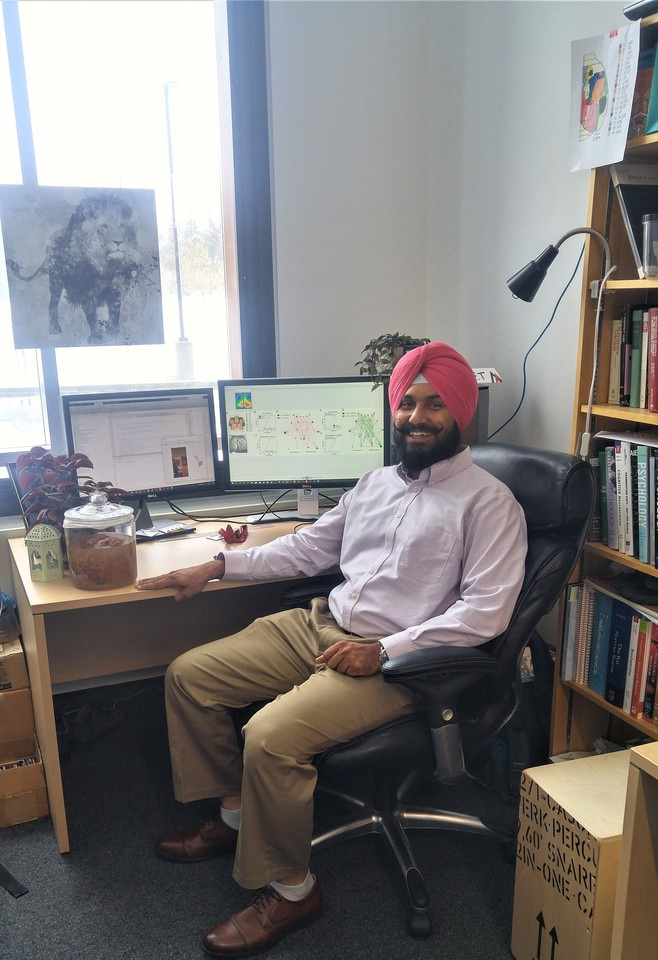
In August 2016 I quit my job to start a new journey as a graduate student at Canadian Centre for Behavioural Neuroscience, University of Lethbridge, Canada. With enthusiasm, I began with a career objective of achieving a PhD, a post-doc and then a faculty position. At first, I found older fellow graduate students disillusioned with their academic prospects. The answer to why they were concerned came one day during one of the lectures in our grad seminar course. The instructor, Ian Whishaw gave a talk on “What next after a PhD?”, the statistics he presented about future job prospects showed a ~5% chance of getting a faculty position. It started me rethinking my plans.
I began to read up on how to prepare for an academic career. Going through the advertisements for faculty positions, one common requirement, irrespective of the discipline was “strong publication record”. Now this made me dig a bit more because I knew a few senior post-docs who have an excellent publication record - one of them has ~40 publications and ~700 citations but no academic position.
Figure 1 shows the problem. There are very few new faculty positions vs the number of new PhDs in science and engineering [1] . Further, the number of faculty positions created each year is fairly constant, while the number of PhDs awarded each year is increasing.
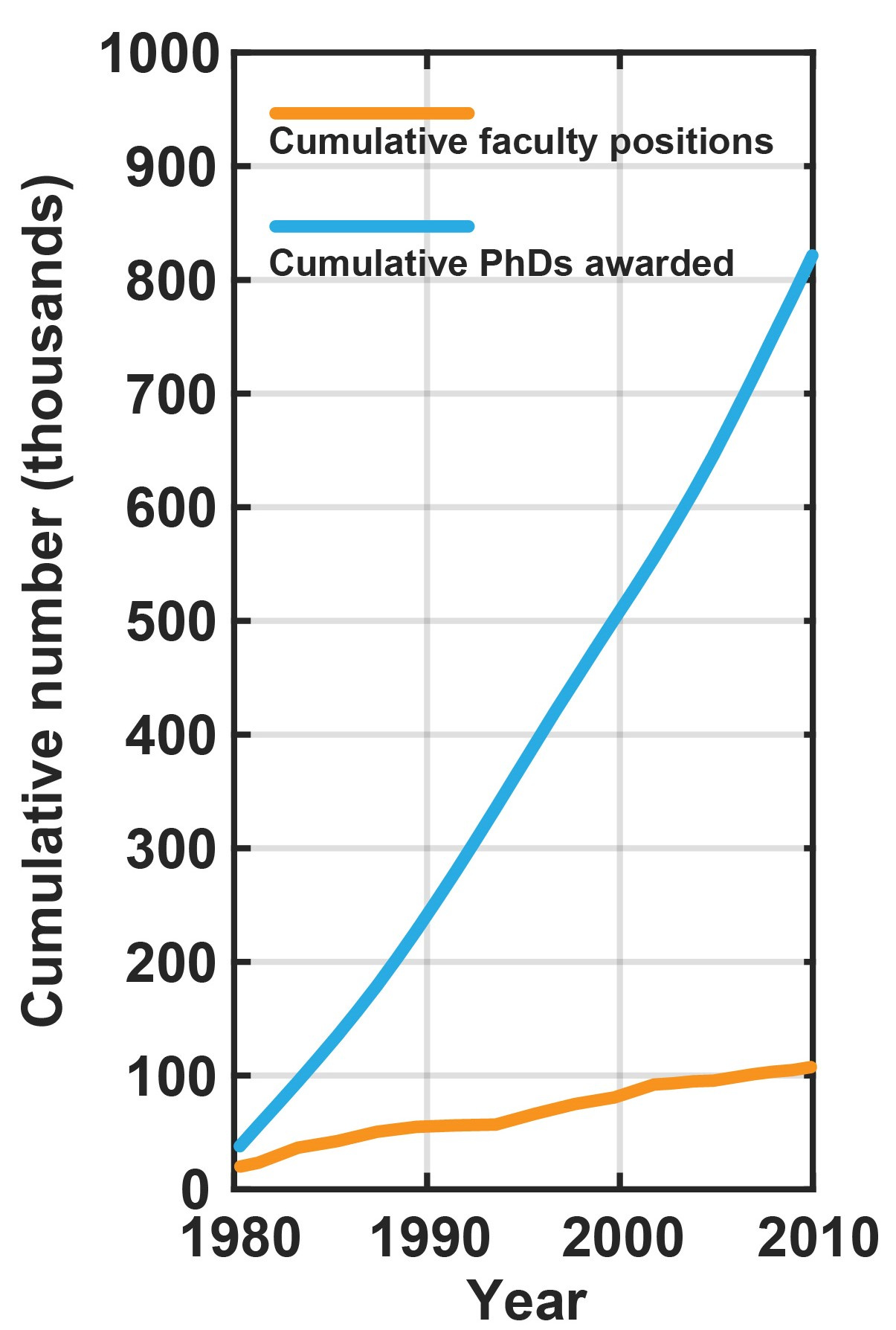
A graduate student’s life is now so structured around publications that even a PhD thesis is a collection of manuscripts. The pressure to publish is enhanced in those programs in which a PhD student needs 3 first author publications to graduate. I know one student who has spent 5 years struggling to get 1 publication. I also know a student in a big lab who has many publications, some of which required little work on his part. But it hasn’t always been this way.
Once the object of a PhD was to produce a thesis. In their monographs of advice to students Nobel Prize winner Santiago Ramón y Cajal [2] and National Academy of Science member Philip Teitelbaum [3], place no emphasis on publications. RS Woodward, a pioneer in the study of motor behaviour, published his PhD “The accuracy of voluntary movement” verbatim and as sole author for this first publication in 1899 - it has since received a remarkable 1896 citations.
To appreciate publications trends, the Web of Science™ shows that the number of articles (Neurosciences & Neurology) in the MEDLINE® database has risen significant from 34,371 in 1950 to 4,151,590 in 2019* (Figure 2). This overall trend is also reflected in the sub-discipline: Behavioural Science, from 2,867 to 971,719 articles in the same time (Figure 3). It is also worth mentioning that not only is there an increase in number of publications, but the number of journals has also increased from 1,823 in 1950 to 13,546 in 2019*.
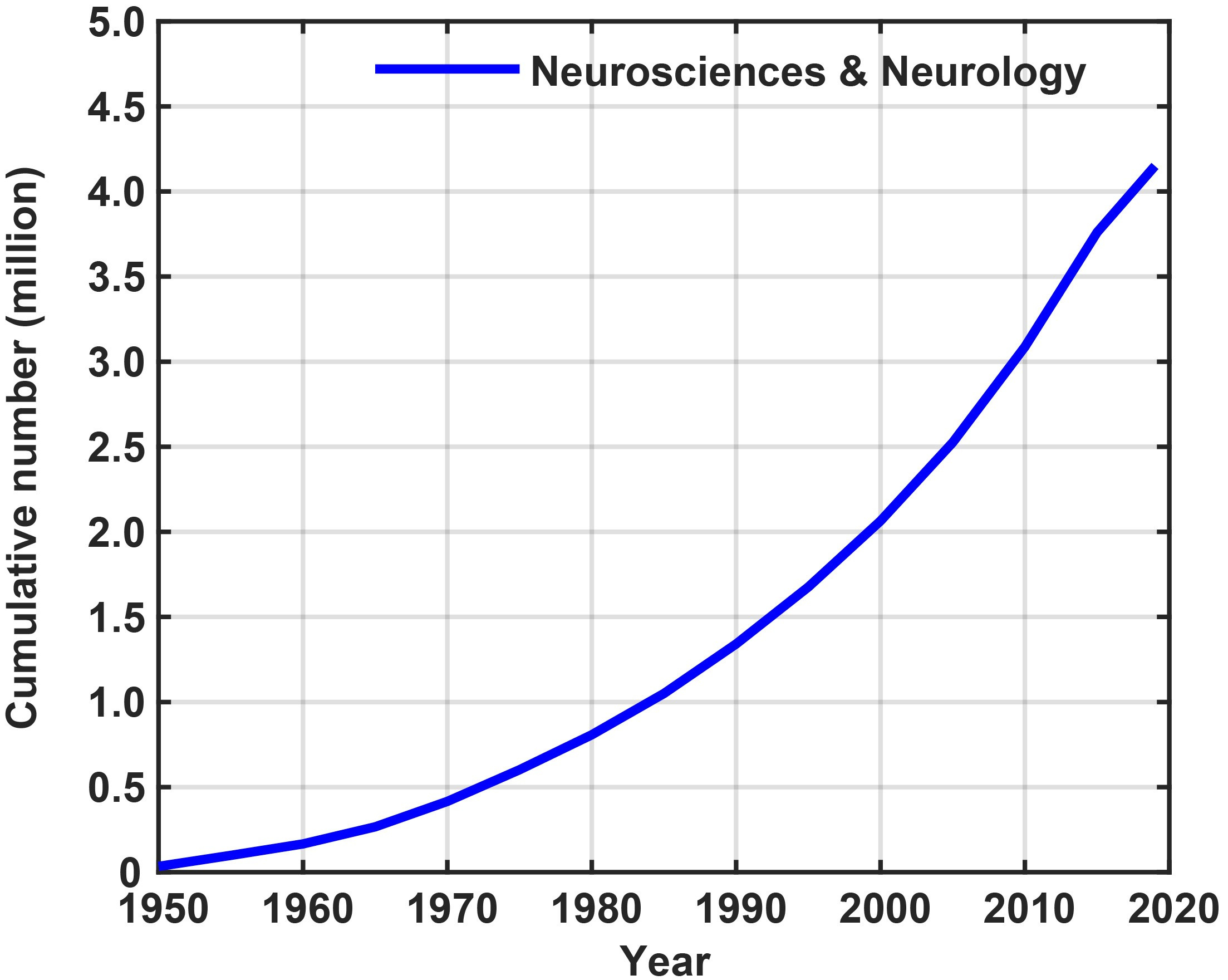
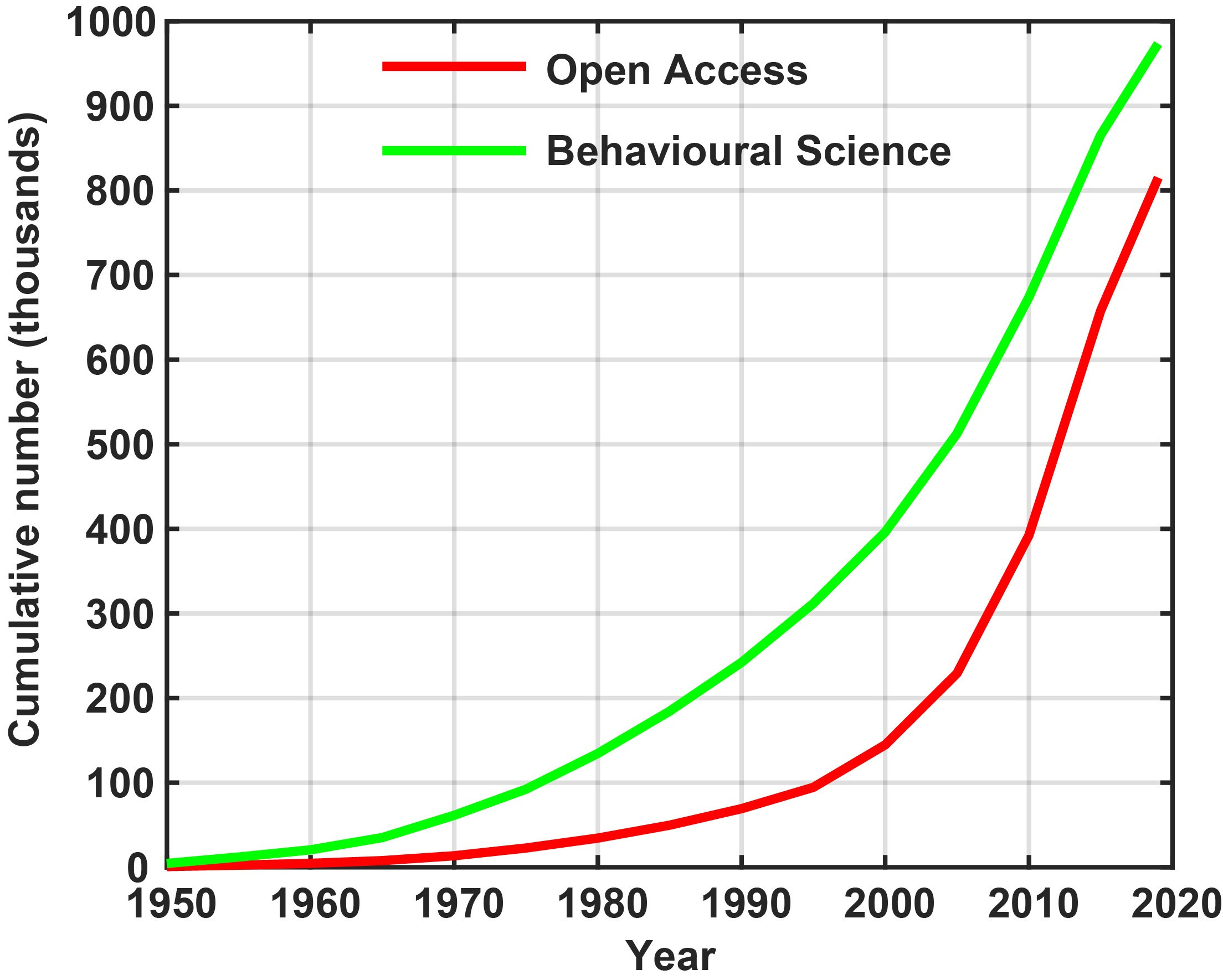
Journals with the highest publication numbers are shown in Figure 4, the top five journals are Brain Research (1966–present: 55,559), Neurology (1951–present: 35,609), The Journal of Neuroscience (1981–present: 33,349), PLOS One (2006–present: 31,012) and Neuroscience Letters (1975–present: 29,193). PLOS One (an open access journal) has the highest publication rate and Figure 3 shows the increasing trend in open access publications.
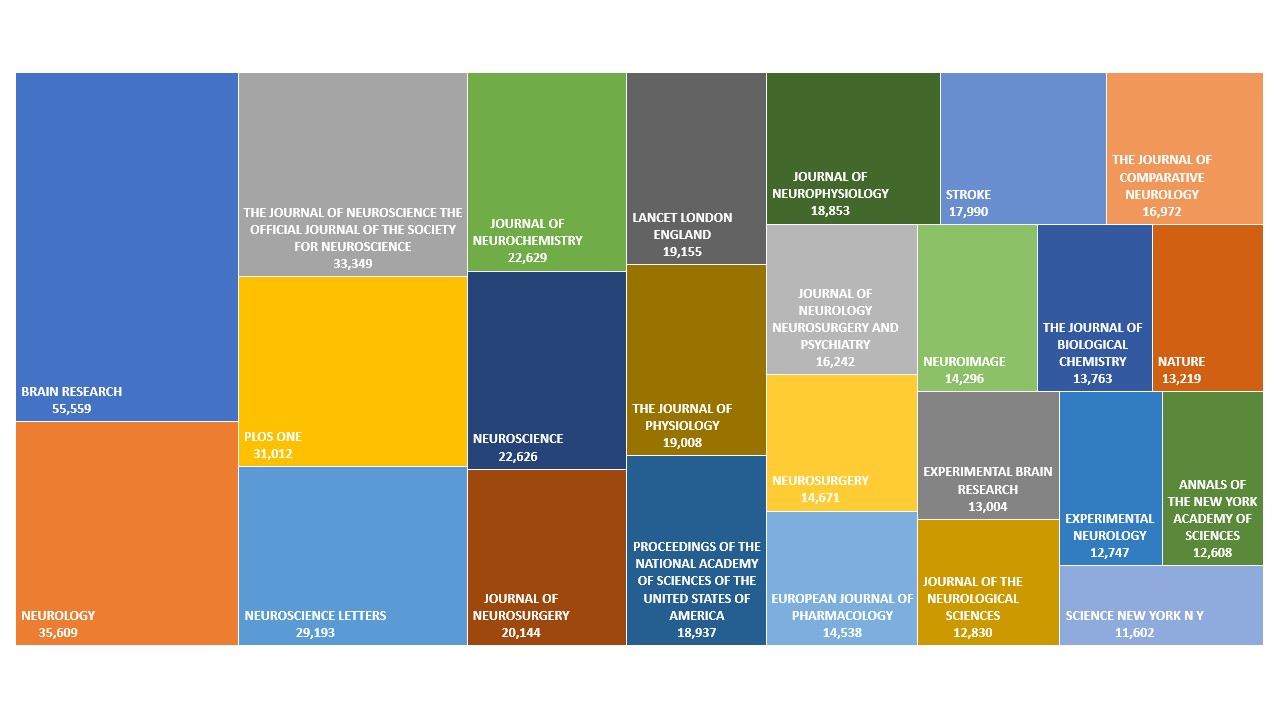
Not only is the number of published articles in Behavioural Sciences increasing, the number of authors per manuscript is increasing. Figure 5 shows an increase from ~1 in 1950 to ~5 in 2019*. Although this trend may present a picture of an collaborative environment, it also means that authors are making niche contributions. And the criteria for authorship is also changing. Clearly the criteria that led Woodward to publish his thesis with single authorship after he graduated are not the criteria applied today. And there is increasing emphasis, from groups such as the Society for Neuroscience as well as from journals, on the criteria for authorship and it is likely that these criteria are not keeping up with authorship trends.
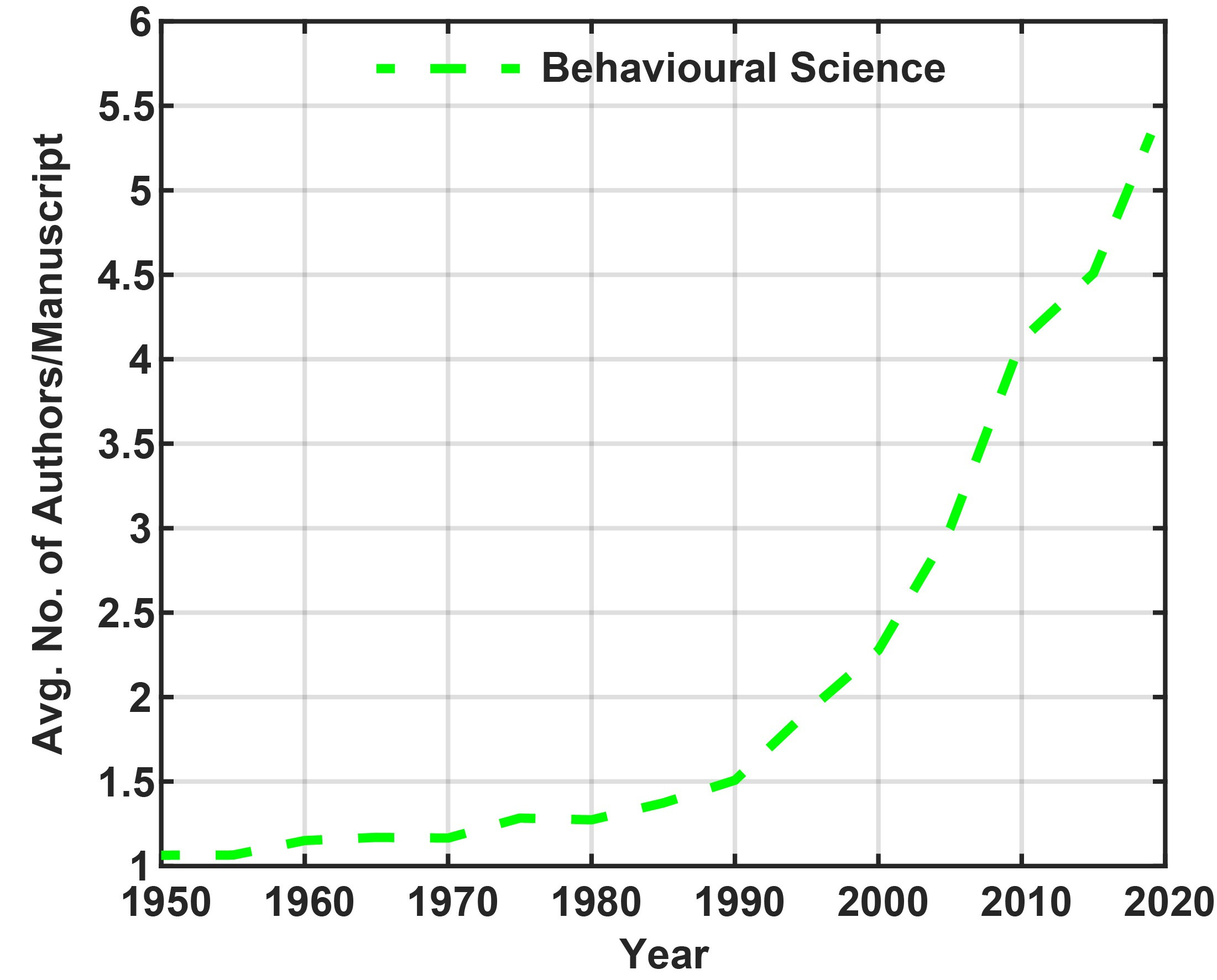
I asked my senior professors their take on the problem:
“A PhD is a personally rewarding experience - but it is student beware. It may not be the gateway to the career that you envision. You will likely have to do a few years as a post-doc and even then jobs in academia will be scarce. But you can change your plans before that. In the time it takes to do a post-doc, you could get a degree in medicine, in dentistry, or law and in a shorter period of time you could get a degree in education or an MBA. Every supervisor and every graduate faculty has a responsibility to provide this information to their graduate students.” - Dr. Ian Q. Whishaw.
“It might be worth considering that universities also hire professors exclusively for teaching. Thus, applicants with teaching experience beyond TAs will likely be judged more favourably than those without it, and especially if there are student evaluations to show that their teaching is good. When I did my PhD at Penn State all psychology PhDs were required to teach a small enrolment section of Introductory Psychology.” - Dr. Bryan Kolb.
“The pressure on those few who do receive faculty positions to publish is still increasing. This distorts important aspects of mentoring students. Often students who have acquired good research skills are required to publish when this may be more in the interests of the faculty member supervising than in the interests of their own training goals. Further, they are sometimes held in training programs for longer than is beneficial to their own future careers.” - Dr. Robert J. Sutherland.
“I don’t see any solution to this race and the situation seems to be going out of control. But what is important for students/trainees in current situation is to collaborate with their peers and gain a range of skill sets (interpersonal, technical, scientific, etc.) which are essential for any job.” - Dr. Majid H. Mohajerani.
What I take from all of this is that, for graduate students it is not just “publish or perish”. The inflation in publishing means that students may have a lot of publications but not all publications are equal. Graduate students must be told not only about job prospects, but they must also be told the value of a first author publication. In response to an application for an academic job, it is likely that a review committee is sensitive to the “inflation of authorships” and may be counting only an applicant’s first-authored publications. The committee will likely be trying to determine whether the applicant is building a body of scholarship that will define a career or is acting as a technician for others. If a student with a PhD transitions to a teaching position, to industry or government, or opts for a professional school, the evaluator may not look at their publications at all. It may be that, following Woodward’s example when it comes to publishing, “less may be more”.
References:
[1] Schillebeeckx, M., Maricque, B., and Lewis, C. (2013). The missing piece to changing the university culture. Nat. Biotechnol. 31, 938–941.
[2] Ramón y Cajal, S. (1999) [1897]. Advice for a Young Investigator. Translated by Neely Swanson and Larry W. Swanson. Cambridge: MIT Press. ISBN 0-262-68150-1.
[3] Teitelbaum, P. (2012). Some useful insights for graduate students beginning their research in physiological psychology: Anecdotes and attitudes, Behav Brain Res. 231(2), 234-49
Acknowledgement:
I would like to thank my PhD supervisors Drs. Robert J. Sutherland and Majid Mohajerani for their support and motivation. I also want to thank Dr. Ian Whishaw, Dr. Bryan Kolb, Dr. Harpreet Kaur, Ellie Fraser and my peers at CCBN who inspired me to write this blog.
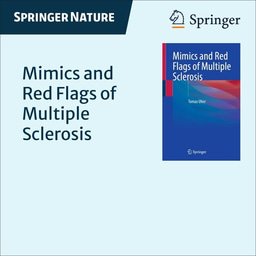




Please sign in or register for FREE
If you are a registered user on Research Communities by Springer Nature, please sign in